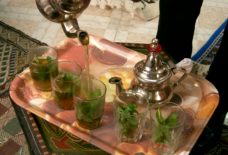“Allo, Beirut?”: How Exhibitions Can Fill the Gap in Lebanese History
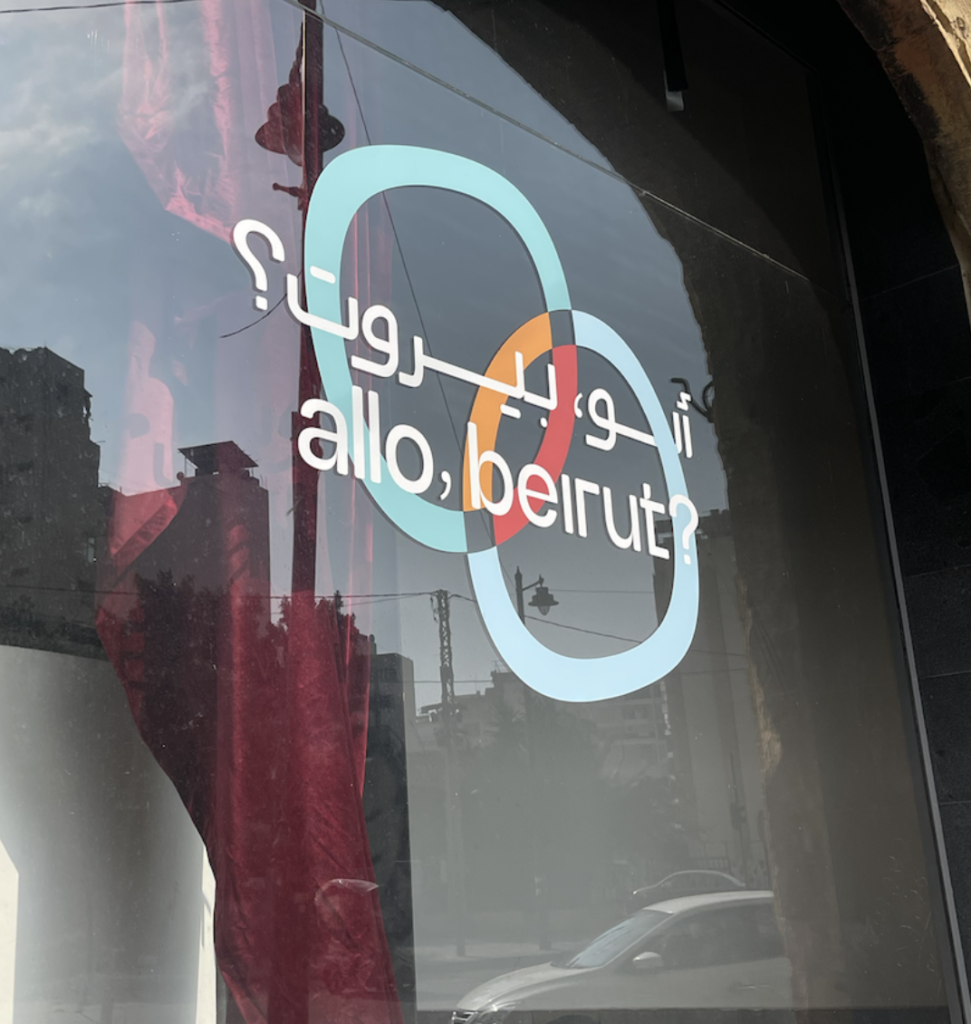
By: Dina Kobeissi / Arab America Contributing Writer
Beit Beirut: Resisting Privatization and Maintaining Public Spaces
Situated in the heart of Beirut at the crossroads of Sodeco and Damascus Road stands Beit Beirut, the building that hosted the “Allo, Beirut?” exhibit. Beit Beirut, also known as the Barakat Building, is one of the few remaining structures in Lebanon untouched by the long civil war. It served as a forward control post and sniper base during the conflict, and today, adorned with bullet holes, it preserves its distinctive structure, bearing witness to the impact of “war architecture.”
In the late 1990s, Beit Beirut faced the threat of demolition, but thanks to the efforts of civil society groups and activists like Youssef Haidar and Mona Hallak, the building was saved. Their commitment to preserving this space reflects its significance—a poignant reminder of war, destruction, and history, while also serving as a symbol of resistance against privatization. These aspects only enhance the powerful messages conveyed by the exhibits and events held year-round within Beit Beirut, including the admission-free “Allo Beirut.”
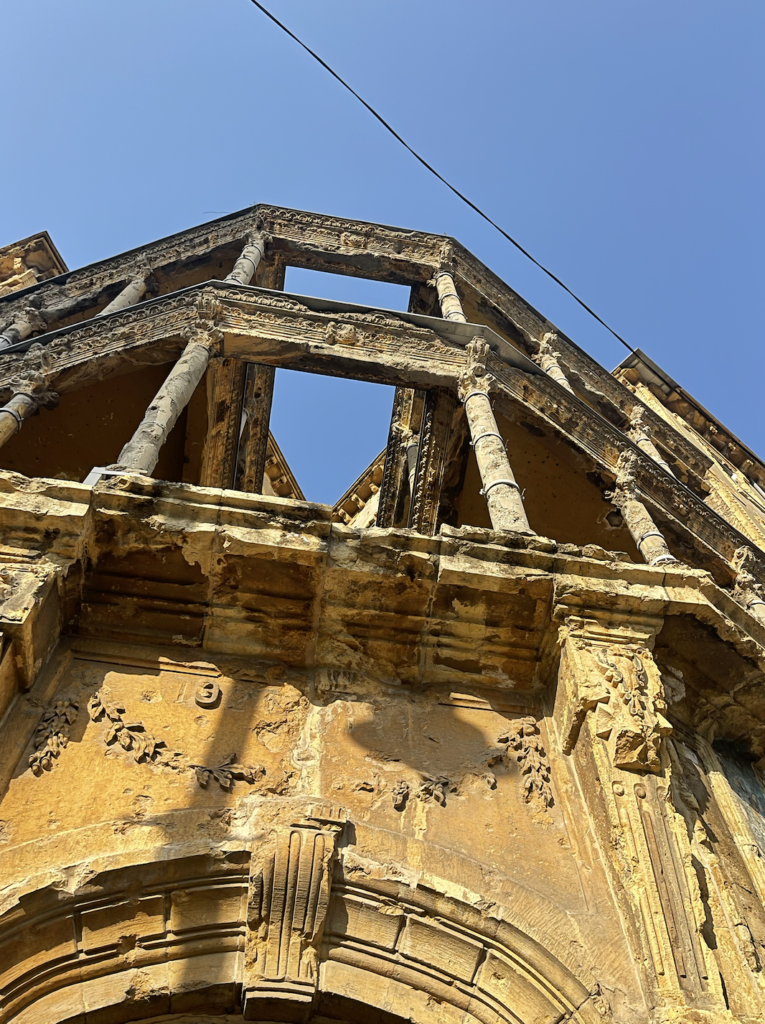
Behind Allo Beirut
Allo Beirut’s walk-through and self exploration style allows the visitor to immerse in the experience and guide themselves through different aspects of what Lebanon has and continues to go through.
In an interview with Delphine Darmency, the project director of the exhibit, she highlighted the limited access to information about Lebanon in the 1960s due to the lack of digitized archives. However, a significant discovery at the nightclub Caves du Roy, which housed a substantial number of archives, provided valuable insights into the historical context. Darmency and her team initiated an investigation into the nightclub’s owner, Prosper Gay-Para (1914-2003), and his contributions to Lebanon’s development.
Darmency shared her realization that the current efforts are not groundbreaking, emphasizing that the Lebanese people have long called for a higher standard in the political system and resistance against the sectarian-based structure. Despite continuous discussions in the previous generation, many individuals were hesitant to actively engage. However, the third generation is displaying a heightened interest, particularly as they bear the weight of an unaddressed past.
Parts of the Exhibit
The exhibit instructs you to go on a “sensory journey through Beirut” and experience the rooms, each created by local artists expressing something about Beirut — its identity, gentrification, the October Revolution, expatriation, and more through different mediums of visual, sound, or audiovisual.
First, a kitchen full of traditional Lebanese staples, as well as comedic comics and art pieces making light of the struggles Beirut has undergone. One such comic features a Christmas tree crafted from money, playfully alluding to the significant inflation in Lebanon, which has resulted in a substantial depreciation of the Lebanese lira’s value.
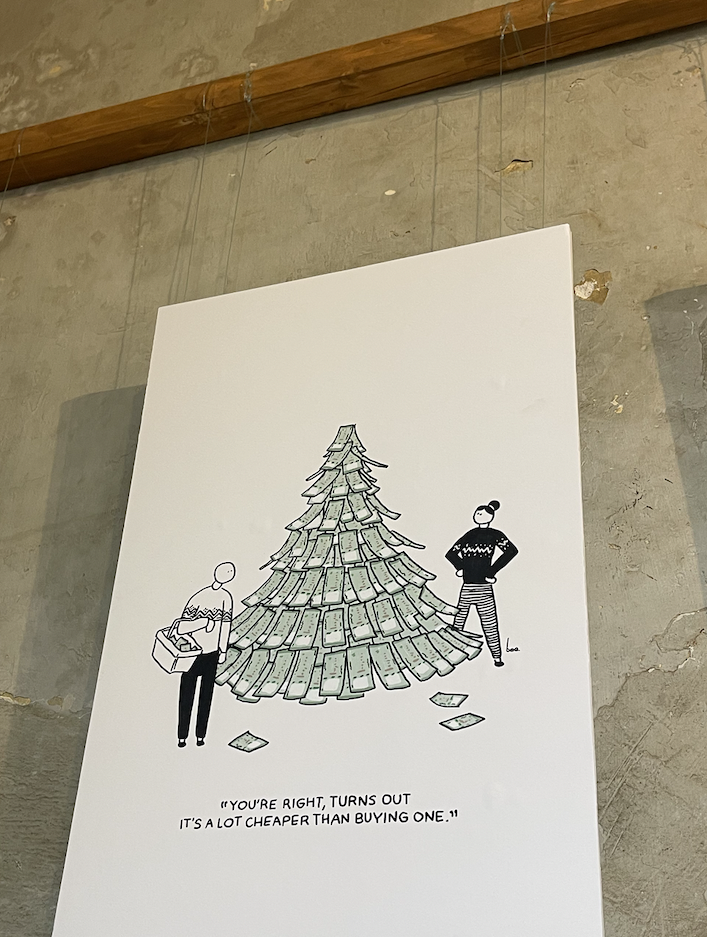
Another comic jokes at the lack of agency and autonomy Lebanon has actually experienced since its official independence because of the interference of other countries in its affairs.
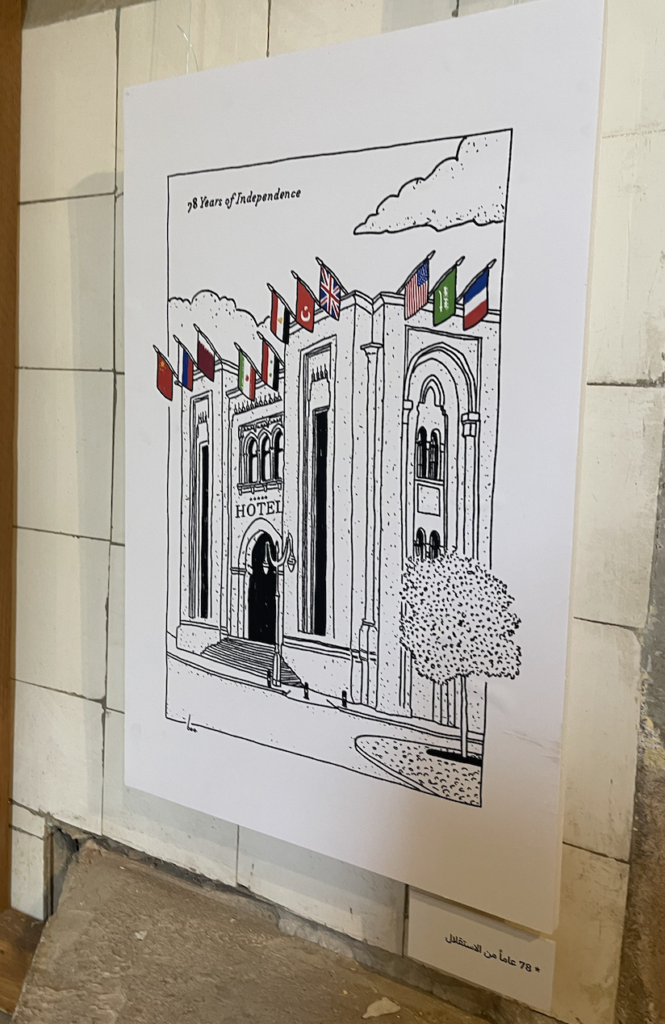
After the kitchen, various rooms play recordings from protests, real recordings of people’s voices and their conversations as well as other audios detailing people’s experiences and stories.
Moving into the nightclub’s office, visitors encounter a diverse array of historical artifacts meticulously assembled for the exhibit. The office is furnished with newspapers, desks, photographs, clothing, and an assortment of other historical items. Each element contributes to the immersive experience, providing a comprehensive view of the nightclub’s past and the broader historical context.
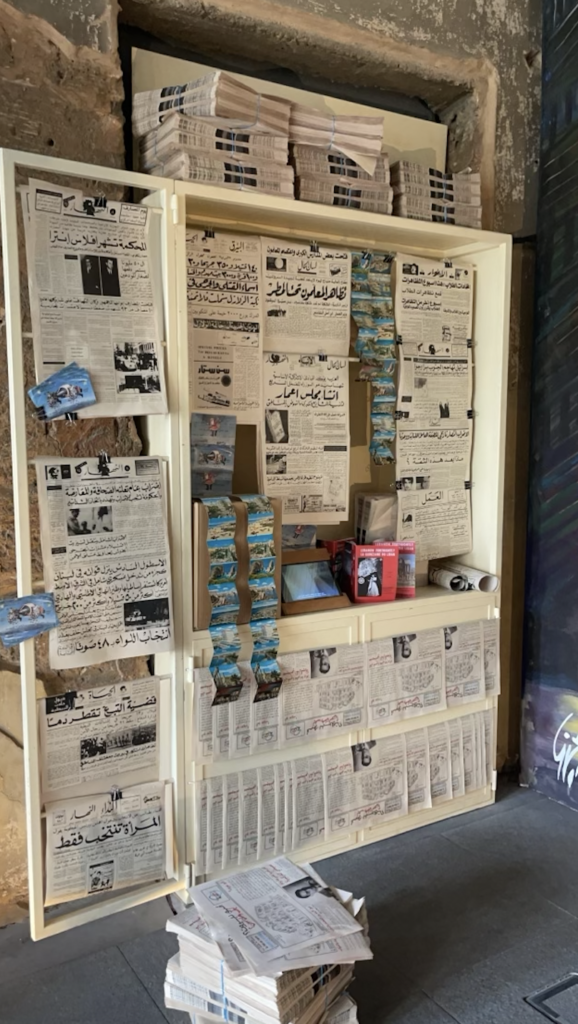
One of the rooms is dedicated to interactive ‘interviews’ with different people, such as bank tellers, where you can choose questions to ask and learn more about the economic crisis and the situation many people found themselves in when the banks in Lebanon collapsed. Another room allows you to play “snakes and ladders” where you “pick a character and immerse yourself in a universe inspired by life in the 60s in Lebanon” with options in the game dictated by who you are: your religion, gender, socioeconomic status, and village to name a few factors.
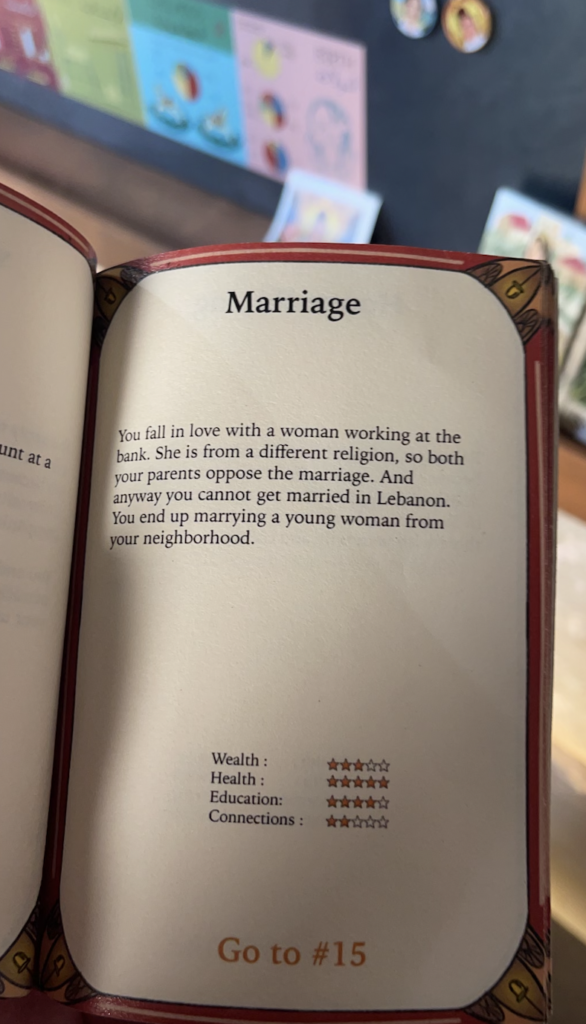
The Takeaway
The various approaches to understanding Lebanon’s past and present create a profound impact on visitors, prompting them to reflect deeply on the Lebanon they know and navigate. It raises questions about the differences and similarities in individual experiences within the same nation. What unique facets of our shared past persist into the present, hindering our ability to rebuild and forge a united and effective future? Allo Beirut encourages contemplation of a multidimensional Lebanon, fostering meaningful dialogue among its people.
Although Allo Beirut was a temporary, year-long exhibit, its message and influence are designed to endure in the hearts and minds of those who encountered it, whether directly or indirectly. The exhibit serves as a catalyst for continued research, education, and heightened awareness of Lebanon’s intricate and distinctive history, ensuring that its impact extends far beyond the confines of its temporary display.
Check out Arab America’s blog here!



